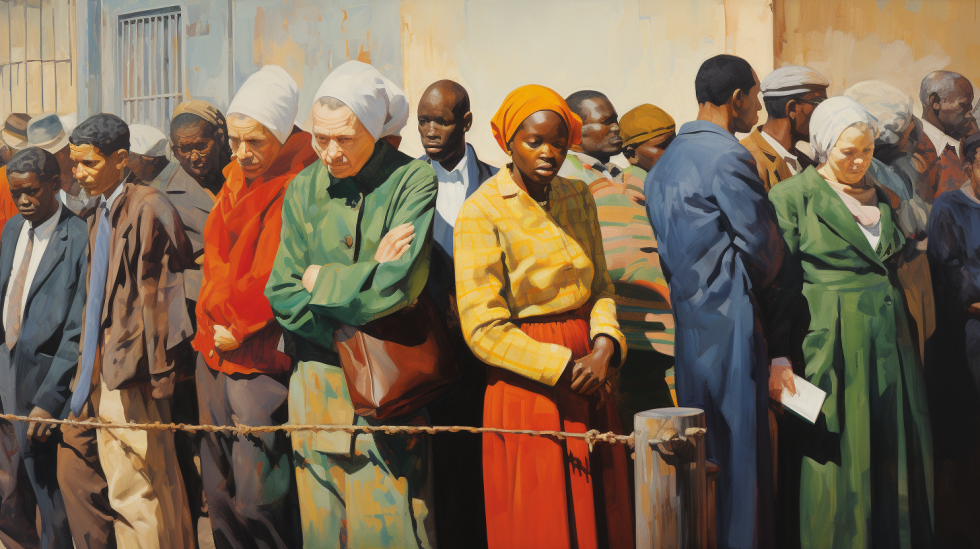- 1. 1. The Foundations of Apartheid: 1948-1950
- 2. 2. Population Registration Act (1950): The Classification of People
- 3. 3. Group Areas Act (1950): Forced Removals and Segregation
- 4. 4. Bantu Education Act (1953): Limiting Educational Opportunities
- 5. 5. Extension of University Education Act (1959): Curtailing Higher Education
- 6. 6. Pass Laws: Restricting Movement and Labor
- 7. 7. The Suppression of Communism Act (1950) and Terrorism Act (1967): Repressing Opposition
- 8. 8. Separate Amenities Act (1953): Segregated Facilities
- 9. 9. The Promotion of Bantu Self-Government Act (1959): Fragmenting Territories
- 10. 10. The 90-Day Detention Law (1963): Arbitrary Detention
- 11. 11. The Black Homeland Citizenship Act (1970): Stripping Citizenship
- 12. 12. The Internal Security Act (1982): Repression and Surveillance
- 13. Conclusion
The period from 1948 to 1994 in South Africa was marked by one of the most reprehensible and systematic forms of racial discrimination and oppression known as apartheid. Apartheid laws, implemented by the National Party government, aimed to establish and enforce racial segregation and discrimination against non-white population groups. This article delves into the disturbing list of apartheid laws enacted during this era, exploring their impact on society and the profound legacy they left behind.

1. The Foundations of Apartheid: 1948-1950
The National Party came to power in 1948, embarking on a journey to institutionalize racial segregation. A series of laws were introduced to lay the groundwork for apartheid, creating a legal framework that would perpetuate racial discrimination.
a. Prohibition of Mixed Marriages Act (1949)
This law prohibited marriages between people of different races, further entrenching racial divisions.
b. Immorality Act (1950)
The Immorality Act criminalized sexual relationships between people of different races, imposing severe penalties and further dehumanizing non-white individuals.
2. Population Registration Act (1950): The Classification of People
The Population Registration Act was a cornerstone of apartheid, requiring every South African to be classified by race. This classification determined an individual’s legal rights and social status.
3. Group Areas Act (1950): Forced Removals and Segregation
The Group Areas Act legalized the enforced segregation of residential areas based on race, leading to forced removals of non-white communities from their homes to designated areas, often located on the outskirts of cities.
4. Bantu Education Act (1953): Limiting Educational Opportunities
The Bantu Education Act epitomized the deliberate inequality in education. Non-white students were provided inferior education designed to prepare them for a life of labor rather than empowerment.
5. Extension of University Education Act (1959): Curtailing Higher Education
This act restricted non-white individuals’ access to higher education by establishing separate universities for different racial groups, severely limiting opportunities for academic advancement.
6. Pass Laws: Restricting Movement and Labor
The Pass Laws were a series of regulations that mandated non-white individuals to carry passes (official documents) to enter “white” areas. This system controlled their movement and labor opportunities.
7. The Suppression of Communism Act (1950) and Terrorism Act (1967): Repressing Opposition
These acts provided the government with sweeping powers to suppress political opposition, detain activists without trial, and stifle resistance to apartheid policies.
8. Separate Amenities Act (1953): Segregated Facilities
This law enforced the provision of separate and unequal facilities for different racial groups, further institutionalizing racial segregation in public spaces.
9. The Promotion of Bantu Self-Government Act (1959): Fragmenting Territories
This act fragmented South Africa into separate territories for different racial groups, deepening divisions and segregating communities based on ethnicity.
10. The 90-Day Detention Law (1963): Arbitrary Detention
Under this law, the government could detain individuals without trial for up to 90 days, allowing for the widespread suppression of anti-apartheid activists and dissent.
11. The Black Homeland Citizenship Act (1970): Stripping Citizenship
This act stripped non-white South Africans of their citizenship, designating them as citizens of separate “homelands” with limited rights in South Africa.
12. The Internal Security Act (1982): Repression and Surveillance
This act granted the government broad powers to maintain public order and combat “subversive” activities, further stifling opposition and activism.
Conclusion
The list of apartheid laws from 1948 to 1994 in South Africa constitutes a dark chapter in the nation’s history, characterized by the systematic dehumanization, segregation, and oppression of non-white populations. These laws enforced racial discrimination, stifled political dissent, restricted movement, and limited opportunities for education and advancement. While apartheid formally ended in 1994 with the democratic elections and the election of Nelson Mandela as president, the legacy of these laws continues to shape the socio-political landscape of South Africa. Recognizing and understanding this history is essential for acknowledging the immense suffering endured by countless individuals and for striving toward a more just and equitable society for all.
